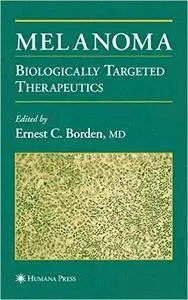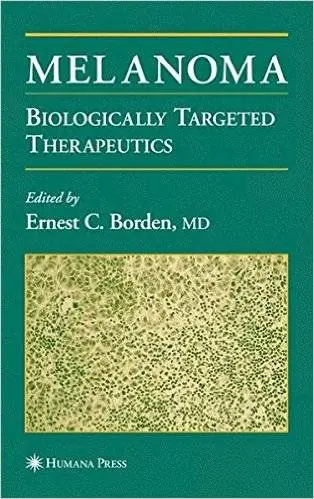Melanoma: Biologically Targeted Therapeutics (Current Clinical Oncology) by Ernest C. Borden
English | Apr. 3, 2002 | ISBN: 0896038769 | 415 Pages | PDF | 10 MB
English | Apr. 3, 2002 | ISBN: 0896038769 | 415 Pages | PDF | 10 MB
Strategies of treatment involving therapeutic proteins, irnrnune immune cells, or cel lular protein targets are those of greatest potential for further reducing mortality from melanoma. Therapeutic proteins or cells may inhibit melanoma cell growth either by augmentation of immune cell function or by inhibition of angiogenesis. Cytokines and melanoma antigens may be used either in vivo as a vaccine to stimulate irnrnune immune cell cell function or ex vivo to stimulate or proliferate cells for infusion. Alternatively, alteration in melanoma cell growth can occur through inhibition of protein signal transduction pathways within melanoma cells or in the endothelial cells constituting the necessary angiogenic support for tumor growth. The great promise of these therapies and their cellular targets constitutes the basis for Melanoma: Biologically Targeted Therapeutics. THE CLINlCAL PROBLEM More than four million people will be diagnosed with melanoma in the first decade of the 21st century. Half of those who will die will be individuals who would otherwise have had a life expectancy of another 25 years or more. These individuals will die of systemic systernic metastases, which are present at the time of primary surgery. Despite use of sunscreens, incidence continues to increase in developed countries worldwide. To reduce mortality, there must continue to be a focus on prevention and earlier detection through public education. Early interventions are always preferable to treatment of disseminated metastatic disease.



